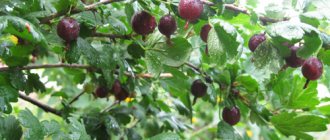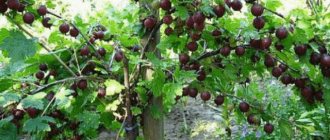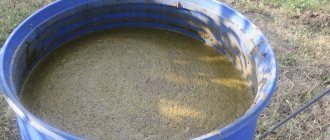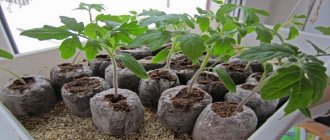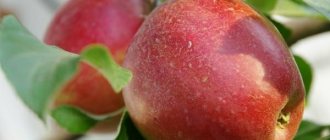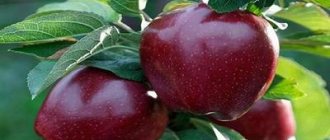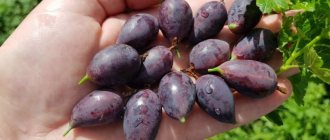History of variety development
The gooseberry variety Harlequin with attractive red berries is the result of breeding work by employees of the South Ural Research Institute of Horticulture and Potato Growing. Its author, V.S. Ilyin crossed the Chelyabinsk green and African gooseberry varieties. The new variety of gooseberries has been tested in plantings since 1989, and 6 years later it was included in the State Register with recommendations for cultivation in the Ural and Western Siberian regions.
Reviews from gardeners
Harlequin berries are convenient to pick without fear of pricking yourself.
When selling seedlings, sellers sometimes exaggerate too much when describing certain properties and characteristics of plants, and after planting the plant and waiting for fruiting, the gardener understands that this variety has no place in a small garden, and it will not become desirable in a large one.
Disappointment comes from wasted years of waiting and distrust in the implementers. Of course, it’s good if you have the opportunity to first see the bush, appreciate all its delights, taste the berries and see the harvest with your own eyes, and then kindly ask to dig in a twig to get horizontal layering of the gooseberry variety you like.
Unfortunately, this is not always the case. There are very few reviews about Harlequin gooseberries . Perhaps this is due to the fact that people do not want to talk about a variety they don’t like, and remove it from the garden, not even wanting to remember.
Those descriptions that can be found in online stores do not quite correspond to reality, to put it mildly, so it is better to double-check the information a thousand times, and only then decide whether “Harlequin” is needed in the garden.
Description of the bush and berries
The medium-sized Harlequin gooseberry bush has straight, medium-spreading branches. Slightly spiny shoots without pubescence, light green. Weak, short and thin spines of a single type are found only on some shoots at the nodes. Three- and five-lobed leaves with blunt teeth are slightly larger than average in size, with fine pubescence, moderately wrinkled and slightly shiny. In overgrowing shoots, the base of the leaf has a small notch or is straight. Small, brown buds with a pointed tip deviate from the branch.
The inflorescence of the variety contains 2-3 small bright flowers with long pink or light red bent sepals. The peduncle is dark green.
The round-oval, uniform berries of the Harlequin gooseberry variety are deep dark cherry in color; in the full ripening phase, they weigh from 2.7 g to 5.4 g. The skin is of medium density and has no pubescence. The pulp is sweet and sour, juicy, thick, and starchy in the phase of full maturity. 100 g of gooseberry berries contain 24.4 mg of ascorbic acid. The berries contain 6.6% sugar, 3.3% acid, 12.3% dry matter. According to the All-Russian Research Institute for Breeding Fruit Crops, the tasting score of Harlequin gooseberries is 4.8 points.
Advantages and disadvantages
| Advantages | Flaws |
| Self-fertility (38.9%) | Average yield compared to new varieties. For sufficient berry picking, 3-4 plants should be planted |
| Branches of the Harlequin variety are weakly thorny | The berries have a mediocre taste; they are recommended to be processed |
| Commercial attractiveness of berries | Late ripening |
| Resistance of the Harlequin variety to frost and drought, easy care | |
| Powdery mildew resistance | Susceptibility to septoria |
Important! Water the Harlequin gooseberry abundantly so that the earthen ball with all the roots is moistened.
What is Harlequin gooseberry?
The dark cherry gooseberry Harlequin has a medium-sized bush with medium spreading, straight branches. The shoots have small thorns and no pubescence. The shoots are light green in color. Thorns can be found very rarely, on some shoots.
The leaves are slightly larger than average in size, have a small edge, and are not very shiny. The buds are small, brown in color, have a pointed tip, and deviate from the branch. The peduncle is dark green.
The inflorescence includes 2-3 small flowers with sepals that are pink or light red. The berries are round-oval in shape, deep dark cherry color. The weight of one berry can reach up to 5.5 g.
The skin is of medium density, without pubescence. The pulp has a sweet and sour taste and is distinguished by its juiciness. Berries contain a sufficient amount of ascorbic acid
Advantages and disadvantages.
Among the advantages of the Harlequin variety are:
- Self-fertility.
- The branches have slight thorns, which makes harvesting easier.
- Excellent presentation of berries.
- It tolerates frost and drought well, and is also easy to care for.
- Good immunity to powdery mildew.
As for the minuses , these are:
- Average yield. If you want to get a rich harvest, then you should plant about 3-4 gooseberry bushes.
- The berries have a mediocre taste, so they are recommended for processing.
- The variety is late ripening.
- May be susceptible to diseases such as septoria.
- The variety needs to be watered abundantly enough so that the entire root system can be thoroughly saturated.
Characteristics
| Criteria | Data |
| Productivity | From 1 square meter 0.4 kg of berries are harvested. At variety testing stations, gooseberries yielded up to 8 tons per hectare. On average, over the years of testing, from 1992 to 1994, the Harlequin variety showed a yield of 38.0 c/ha. |
| Drought resistance | Gooseberries tolerate short dry periods, but this variety requires sufficient moisture to form berries. |
| Winter hardiness | The Harlequin variety bush tolerates temperatures of -35°C. In frosty winters the tops freeze. The shoots recover well and bear fruit. Resistant to spring temperature changes |
| Resistance to diseases and pests | The Harlequin variety is not affected by powdery mildew and is susceptible to white leaf spot. Sawfly larvae eat tender gooseberry leaves |
| Maturation period | Late. In the European part of Russia, the Harlequin variety will ripen by the end of July, in Siberia - in August |
| Transportability | The dense structure of the berries endures transportation |
Preparing for winter
Preparations for wintering gooseberries begin around the first half of October. At this time, all plant debris and fallen leaves must be removed from the area. After this, the bushes need to be treated with Bordeaux mixture, copper sulfate or any other protective agent with complex effects.
Approximately 4–6 weeks before the onset of winter cold, you should thoroughly water the bush, and then dig up the tree trunk circle after about a week.
Did you know? At the beginning of the 20th century, the gooseberry population on the planet was practically destroyed by powdery mildew, but in just a few decades, breeders managed to overcome the problem. Today, almost all existing varieties are extremely resistant to the infectious agent.
If possible, the dug up soil should be poured with boiling water; this is done in order to reduce the number of all kinds of pest larvae. After this, the soil in the tree trunk circle is mulched with sawdust, seed husks, coconut coir, etc.
In this case, the thickness of the mulch layer should be at least 10 cm. At the end of the procedure, if necessary, the gooseberries are tied to a support and covered with spunbond or any other vapor-permeable material.
Landing Features
Harlequin gooseberries are planted in spring and autumn. Autumn planting at the end of September is preferable, since the buds of the bush wake up early. Gooseberries planted in spring may take a long time to take root and will weaken. Bushes of the Harlequin variety with predominantly erect shoots are placed at intervals of 0.8-1.2 m, providing sufficient insolation and ventilation. When choosing a seedling, pay attention to the presence of a branched root system. The shoots are healthy, without wounds on the bark.
- Prepare a hole 0.7 m wide and deep.
- A drainage of gravel, pebbles, small fragments of bricks is placed at the bottom and covered with sand.
- For the substrate, fertile soil is mixed with 8-10 kg of humus or compost, 5 kg of sand on heavy soils, 200 g of wood ash and 100 g of nitrophoska or a mineral complex for berry bushes.
- Gooseberry roots are laid out on a mound of substrate at a depth of 60 cm and the root collar is sprinkled.
- The soil is compacted, watered, and mulch of humus or peat is placed on top.
Attention! In autumn, seedlings are planted high, protecting them from frost.
How to plant Harlequin gooseberries correctly
The plant can be planted in both autumn and spring. Summer residents advise planting in the fall. It is better to choose the end of September, since in the spring the plant’s buds bloom quite quickly.
A bush that was planted in the spring takes root less well, begins to weaken and may eventually die. If you are going to plant several bushes, then do not forget to maintain a distance of up to 1.2 m so that all bushes can develop comfortably.
When choosing a seedling, the first thing you should pay attention to is the root system. The shoots must be healthy, without any damage. Autumn seedlings must be hilled high, protecting them from frost. How to plant a bush correctly:
- We prepare a planting hole with dimensions of 0.7 * 0.7 m.
- Down prepare drainage. Suitable for drainage: pebbles, gravel, fragments of red brick. Then cover everything with sand.
- To prepare the nutrient mixture you will need: fertile soil, humus or compost (8-10 kg), sand (5 kg if the soil is heavy), wood ash (200 g), nitrophosk (100 g) or a special mineral fertilizer complex for berries. culture.
- You need to make a mound of nutrient substrate and spread the roots of the plant at a depth of about 55-60 cm. Sprinkle the root collar.
- The soil needs to be compacted and watered thoroughly. Mulch the top using peat or humus.
Rules of care
The undemanding Harlequin gooseberry variety requires minimal care.
Support
After planting, make a support for the branches of the bush. The structure is constructed from wooden beams, metal-plastic pipes, acquiring the necessary fastenings. It prevents branches from accidentally bending towards the ground.
Top dressing
Harlequin gooseberry bushes are given mineral and organic fertilizers. They are used after watering.
- Immediately after the snow melts, 200 g of wood ash and 40 g of nitrophosphate are scattered onto the wet ground in a circle around the tree trunk.
- Before flowering, fertilize with 500 g of mullein or 200 g of bird droppings diluted in 10 liters of water. 50 g of potassium sulfate and ammonium sulfate are added to the organic matter. For young bushes 3 liters is enough, for adults twice as much.
- The same mixture or nitrophoska is fertilized in the phase of ovary formation.
- In the fall, once every 2-3 years, 10-15 kg of humus is poured under the bush.
Bush pruning
Old branches that have reached 5 years old are removed from the gooseberry bush of the Harlequin variety in spring or autumn. The remaining branches are cut off by 10-15 cm from the top. Damaged, frozen shoots or shoots heading into the bush are removed.
Reproduction
The gooseberry variety Harlequin is propagated by layering and dividing the bush.
Near a healthy branch that is located low, dig a groove 10-15 cm deep and lay the branch using garden pins. The place of cuttings is constantly watered, stimulating the formation of roots and shoots. Sprouts that have reached 10-12 cm are spudded. In September, the seedlings are moved.
In the fall, they dig up a large bush and divide the root with a sharp ax. The transplanted divisions are spudded.
Preparing for winter
Having collected fallen leaves, dig up the soil to 10 cm. Add a 12 cm layer of humus or peat, which is removed from the bush in the spring. Sawdust is sometimes added to humus.
Reproduction methods
There are many methods of propagation, and it is for this variety that the layering method is most often used.
It is necessary to prepare planting material in March. The most developed shoots are selected. Then you just need to dig a hole to place the shoot in it, deepening it by 10 cm. The root is usually spreading, and in order to stimulate its development, the top of the branch needs to be pinched. As a result, about 4–6 young shoots will be obtained on one tap. They will become full-fledged seedlings by the next season.
We recommend reading more about gooseberry propagation methods.
Reproduction methods:
- Cuttings
- Layering - press the branched shoot to the soil horizontally or in an arched manner.
- Gooseberries are propagated by combined or woody cuttings.
- Dividing the bush. This method is suitable for bushes that are no more than 5 years old. The bush is always dug up and then divided into parts.
- Vertical layering method. To do this, you need to cut off all the old branches in the fall. New ones will grow throughout the season. The bush must be hilled several times, and the rooted shoots must be replanted.
Disease Control
| Disease | Signs | Control measures | Prevention |
| White spot or septoria | The leaves have grayish spots with a dark border. Later, black dots with spores form on the spots. Leaves curl, dry, fall off | Affected leaves are removed. Treatment with 1% Bordeaux mixture before and after flowering, then after 2 weeks and after picking the berries | In autumn, fallen leaves are removed. In early spring, spray 40 g of copper sulfate per 10 liters of water. Boron, manganese sulfate, zinc, copper are added to the soil under the bushes |
| Anthracnose | Dark brown spots on leaves that dry out and fall off. Young shoots grow weakly. The berries are sour. The harvest is declining | Spraying with 1% Bordeaux mixture, as for septoria | Fallen leaves are removed. In spring, treat with copper sulfate |
| Viral gooseberry mosaic | There are yellow spots in a pattern along the leaf veins. The leaves grow small. Shoots do not grow, yield decreases | There is no treatment. Bushes are removed and burned | Healthy seedlings. Fighting aphids and mites that spread the disease |
Pest Control
| Pests | Signs | Control measures | Prevention |
| Gooseberry sawfly | The appearance of small, up to 6 mm, insects with a shiny black body and membranous wings. The larvae, greenish caterpillars, eat the leaves. The berries are small, the bush weakens, does not tolerate winter | Manual collection of caterpillars, infusions of wormwood, garlic, tobacco | Digging the soil in autumn, loosening in summer, collecting fallen berries |
| Aphid | Colonies on the tips of the shoots, the upper leaves are curled into a ball | Treatment: Iskra, Fufanon, infusions of soap, garlic | In early spring they pour boiling water over the bushes |

